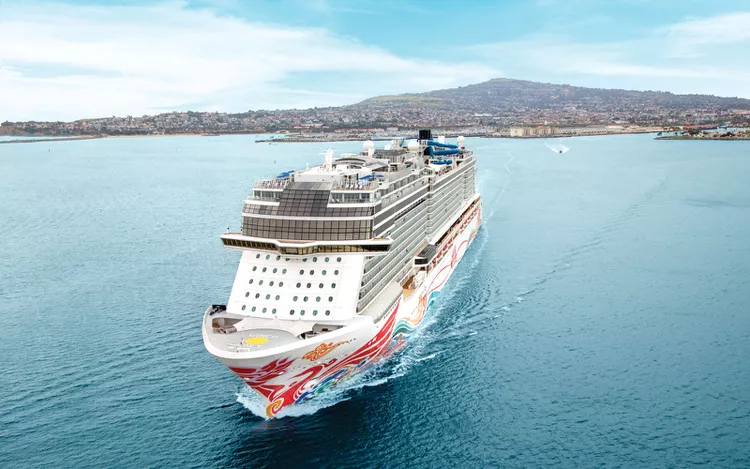The Impressive Transformation of Norwegian Joy
Last month, Norwegian Cruise Line unveiled its latest ship: the 3,800-passenger Norwegian Joy, which is currently plying the waters of Alaska’s Inside Passage.
However, Joy isn’t really new at all. Built two years ago, the ship was originally designed specifically for the booming Chinese cruise market. Joy enjoyed great success with short sailings out of Shanghai and Beijing—until the company announced, in July 2018, that the ship would be moving to the Pacific coast of the Americas after a $50 million overhaul.
What was behind the move, and how did the ship change along the way? I recently spoke with NCL president Andy Stuart to discuss the many lives of Joy.

To build a China-specific ship, NCL worked with a number of local consultants and contractors who advised the company on the preferences and travel habits of the Chinese consumer. “She was very successful,” Stuart told me, describing the early days of Joy. “Highest guest satisfaction of any ship in our fleet. It was our first foray into the Chinese market, and we were happy with how the ship was received.”
Fast forward to April 2018 and the launch of Norwegian Bliss, in Alaska. “That was by far the most successful launch we’ve ever had,” Stuart continued. “The reception was beyond our already lofty expectations, and we decided we wanted a sister ship to Bliss. It was one of our more complicated decisions—but the more we watched Bliss perform, the more we realized this was a big opportunity.”
Norwegian Will Pay for Your Flight If You Book an Alaskan Cruise
Consequently, it’s a significant decision to move a ship across an ocean—but an even bigger challenge to move between vastly different markets. Facing a much more international, mostly Western audience, NCL undertook a major overhaul. The transformation happened quickly; Joy remained in service in China until March 2019, at which point the ship headed to Singapore for drydock for steelwork and floorplan adjustments. Joy was in Seattle by April and headed into service in Alaska in May.
“We were very conscious of how much time and energy we had spent telling the world that Joy was designed for China,” Stuart said. “We went to extraordinary lengths to ensure that this was, in the end, a perfect sister ship to Bliss.“

So what were they working with? “There was more retail space than we would typically put on a ship,” Stuart explained, plus a karaoke lounge and more gaming space. On the flip-side, “there was only a small gym and a very small spa, and limited bars.” Some retail space was modified to add a Starbucks—very popular on board—and a mojito bar, and the game rooms were converted to a casino identical to that aboard Bliss. The gym and spa have been expanded with state-of-the-art equipment and almost doubled the number of treatment rooms.

Stuart also noted that the dining venues had catered to a Chinese audience: “We also had two tea houses—an upscale one, and an everyday one—plus a Korean-style hot pot restaurant and a noodle bar.” In the end, these restaurants were eliminated to expand the popular Teppanyaki concept (found on many Norwegian ships) and add the District Brew House, with 25 beers on tap.

Moreover, other changes include new restaurants, refurbished staterooms, furniture and design alterations, an updated go-kart track, and a refreshed art program. “Art is very much a part of our brand,” said Stuart. “A lot of the artwork had been thematically Chinese, so we partnered with our art consultant, who made new selections of original art.” Another notable addition is the magnificent deck 15 observation lounge (“we had to take out some cabins, which always breaks my heart,” Stuart told me, “but it’s so beautiful.”)

The transformation is remarkable. Stuart stated that, during the inaugural sailing, “it struck me that Joy was essentially a totally different ship. We did the whole christening thing two years ago, but I was talking about her as though she were brand new.” Joy will be the company’s first ship to stay on the west coast of the Americas year-round, consequently meeting skyrocketing demand for Alaska itineraries and dipping into the fast-expanding Mexican Riviera market and the Panama Canal.
So is Norwegian pulling out of China entirely? Not at all, Stuart assured me. “We will certainly continue cruising in China,” he said, “but for a broader audience right now. We are developing a singular global brand.”





